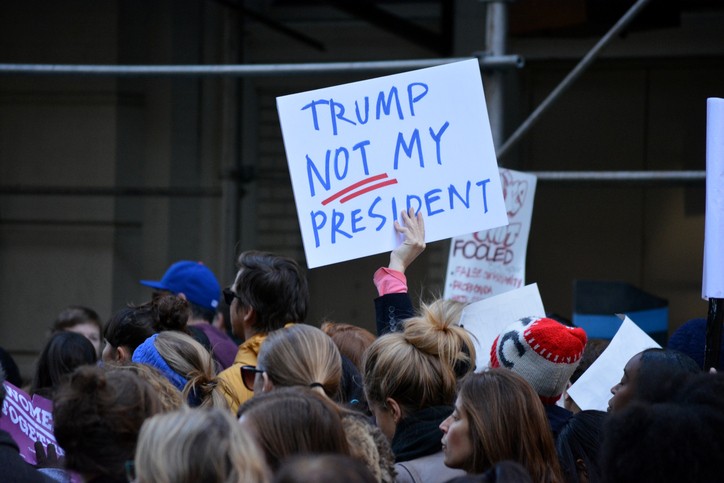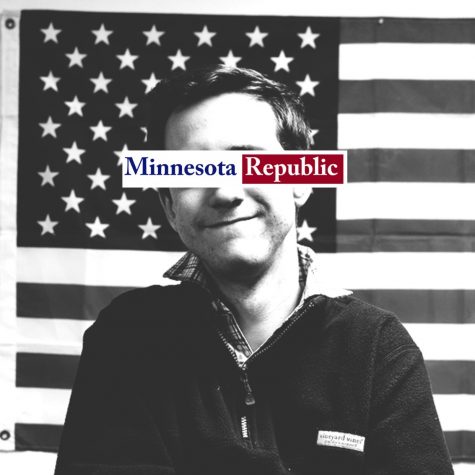Minneapolis Rallies for #NoBanNoWall

New York, New York – November 12, 2016: Protester carrying a sign while marching in a “Trump is not my President” rally in response to the 2016 Presidential Election of Donald Trump in New York City in 2016.
February 13, 2017
President Trump’s recent executive orders on immigration have, to put it lightly, upset several people residing inthe United States’ most prominent cities.
Since Saturday, thousands of Americans have flocked to airports and the hearts of cities to express solidarity with refugees coming in from the seven nations recentlyaffected by the new policiesTrump implemented. After thousands of protesters and lawyers showed up at the JFK airport in New York City to help out the incoming refugees, numerous other airports followed its lead, including the Minneapolis-St. Paul International Airport (MSP). After two continuous days of protests at the MSP airport, Minnesotans rallied in downtown Minneapolis on the afternoon of February 1 to continue the protesting.
Contrary to popular belief perpetuated by the media, Trump’s executive orders will not “ban Muslims” from the United States;civilians from some of the nations with the largest Muslim populations are not barred from entry (one example is Saudi Arabia). In reality, the executive order does ban individuals traveling to the United States from but seven nations, in which Islam happens to be the most popular religion. These seven nations are Syria, Sudan, Somalia, Iran, Yemen, Iraq, and Libya.
The ban on these seven nations, however, has inaugurated a whole movement across the United Statesin opposition to the new policy. Countless number of organizations, such as the American Civil Liberties Union (ACLU), have joined the movement to help those affected by it.
The environment of the Minneapolis protest was energetic, enthusiastic, and passionate, with the volume of chants increasing by the minute. As time went on, the crowd size started to massively increase, attracting over 1,000 attendees. Throughout the audience, children, grandparents, Muslims, Christians, and people from all nationalities chanted and heldsigns, as they all shared a common objective.
Nicholas Tobon, a sophomore at the University of Minnesota, was one of the many college students who attended the protest.
“The reason why I decided to attend this rally was to show my dissenting opinion on multiple executive orders passed by the Trump administration,” Tobon told The Minnesota Republic.
He continued: “This protest was to demonstrate that [Trump] cannot divide us by passing these controversial executive orders and in going, I feel as if I support my community from what I consider to be harmful policies.”
Opponents of Trump’s executive order banning selective immigrationargue that the federal immigration law is not only discriminatory, but also unconstitutional. Following Trump’s comment that Christians will get priority over Muslim immigrants, as Trump claimed Christians were treated even more terribly than Muslims, many citizens believed a clear violation of the First Amendment had occurred. Specifically, they claimed that Trump fails to separate church from state; throughout Thursday’s rally, many signs were spotted signalizing the separation of church and state and advocating to remove government from involvement in religious affairs.
Minnesota will be one of the states most prominentlyaffected by Trump’s executive order on immigration,due to the state’s high population of Somalis.












